hankyoreh
Links to other country sites 다른 나라 사이트 링크
[Reportage] 10 years after Lampedusa tragedy, migrants continue harrowing journeys to Europe
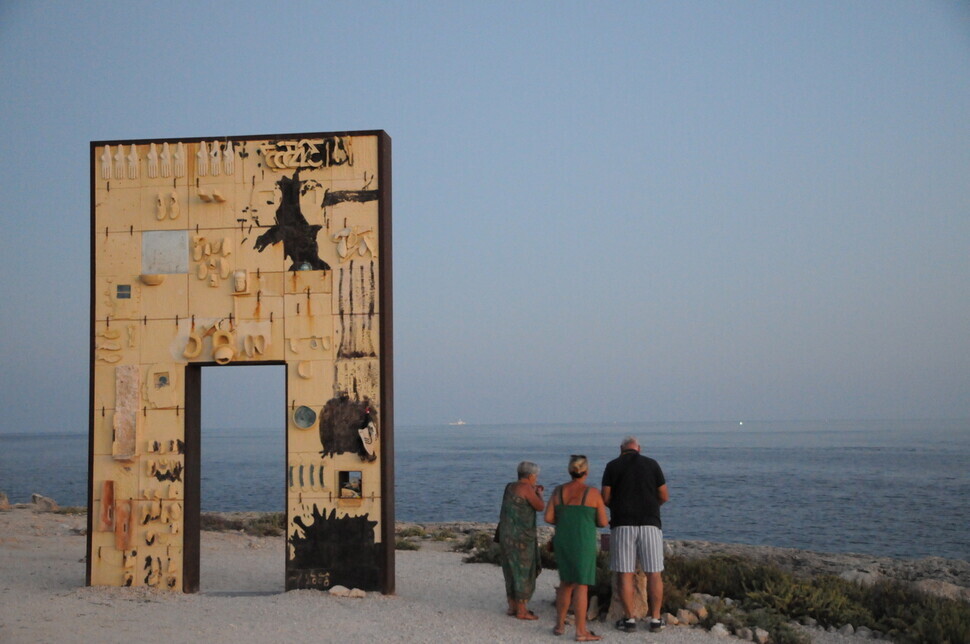
Biniam Michael Negasi, a 25-year-old migrant from Eritrea, has never forgotten what happened on that day.
Around 3 am on Oct. 3, 2013, a boat carrying some 500 migrants was floating on the dark waters of the Mediterranean Sea when it began to fill with water. A fire that was lit with the hope of bringing help ended up spreading across the deck. Panicking people congregated on the other side of the ship, causing it to capsize and then sink.
“The ship was full of water. I thought I was going to die,” Biniam said.
A capable swimmer, Biniam managed to stay afloat in the cold ocean waters for four hours. As the chill sank into him, his consciousness grew faint. The hope he’d clung to in his heart faded along with it.
That was when two men pulled Biniam out of the water. He was one of 155 passengers who were miraculously saved from the shipwreck, which occurred 10 years ago near Italy’s southernmost island of Lampedusa, just 130 kilometers (80.7 miles) away from the continent of Africa.
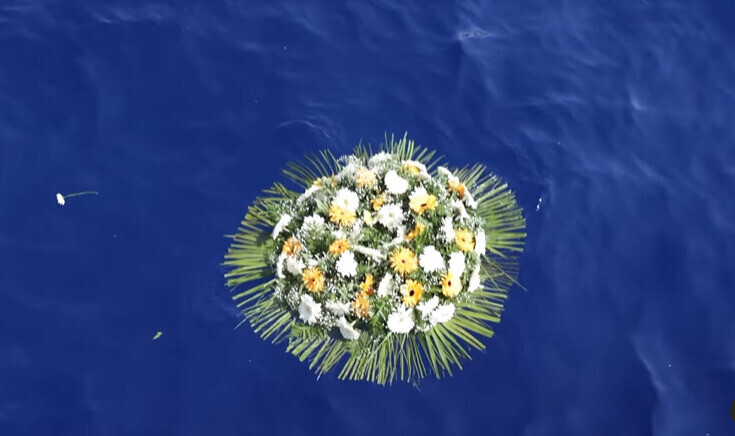
This year on Oct. 3, Biniam bowed his head when he heard sirens sounding at the spot where the accident had occurred off the coast of Lampedusa a decade ago. Survivors tossed flowers into the sea in remembrance of the 368 people who were lost.
Biniam’s eyes brimmed over with hot tears. Another person couldn’t help letting out a sob.
The reason Biniam left his homeland and embarked on that dangerous voyage from Libya was “to support [his] family” after he fled military service with no end in sight.
“I should have run away before I was conscripted,” said Biniam, one of six brothers; his parents are still alive.
“In our country, people aren’t allowed to move around or work as they please, and it’s hard to even get an education. I didn’t have any choice but to escape, despite the dangers.”
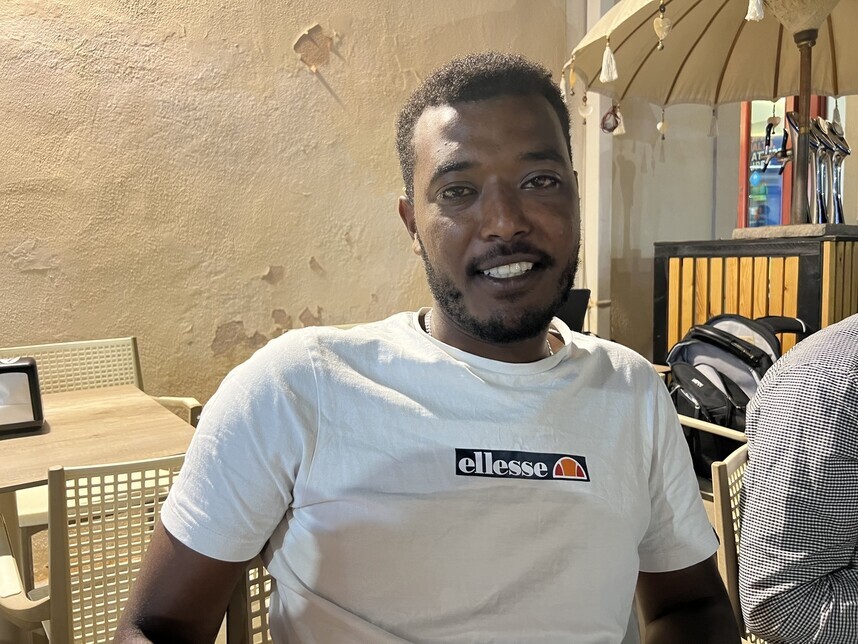
As a minor, he received a residency permit in Germany just one year after the accident. Currently, he has to renew his permit every three years. He works in construction and sends money back home to his family.
Biniam’s homeland of Eritrea broke away from Ethiopia in 1993 after a long war of independence. But just five years later, the two countries were back at war, this time over their national border.
Eritrean President Isaias Afwerki, a dictator with a military background, took that as an excuse to declare an emergency. While conscripts are nominally supposed to serve for 18 months, their term of service has basically been extended indefinitely.
From 2012 to mid-2015, around 2.13% of the country’s population of 5.5 million fled to Europe.
Migrants like Biniam who leave their country and travel to Europe or other advanced economies in the hope of a better life are a thorny issue in Europe today. It’s a challenging problem that nobody has been able to solve for decades now.
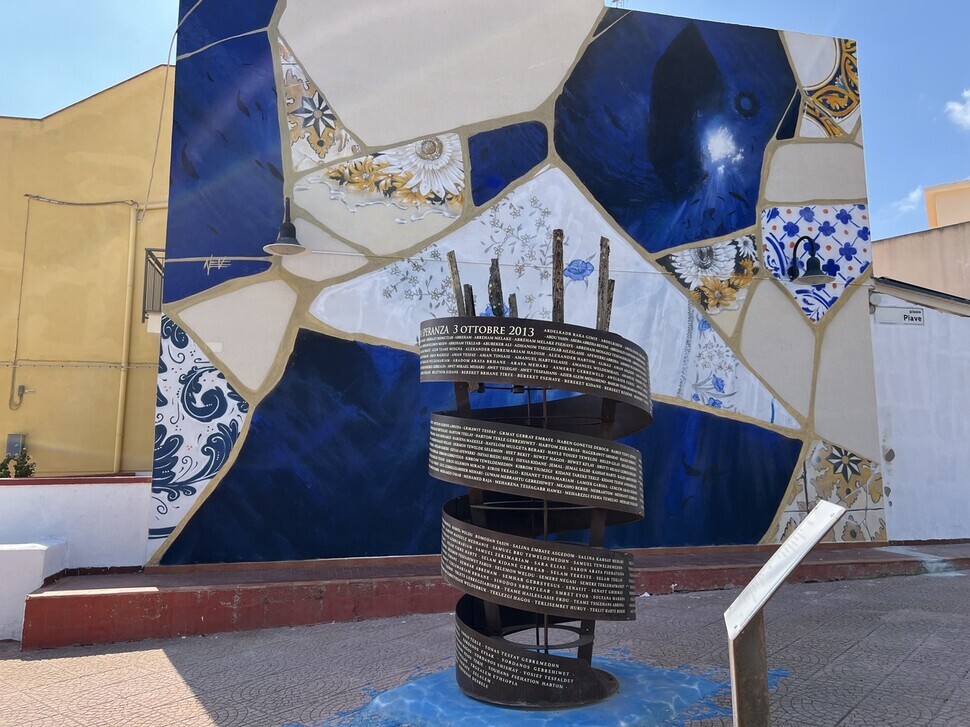
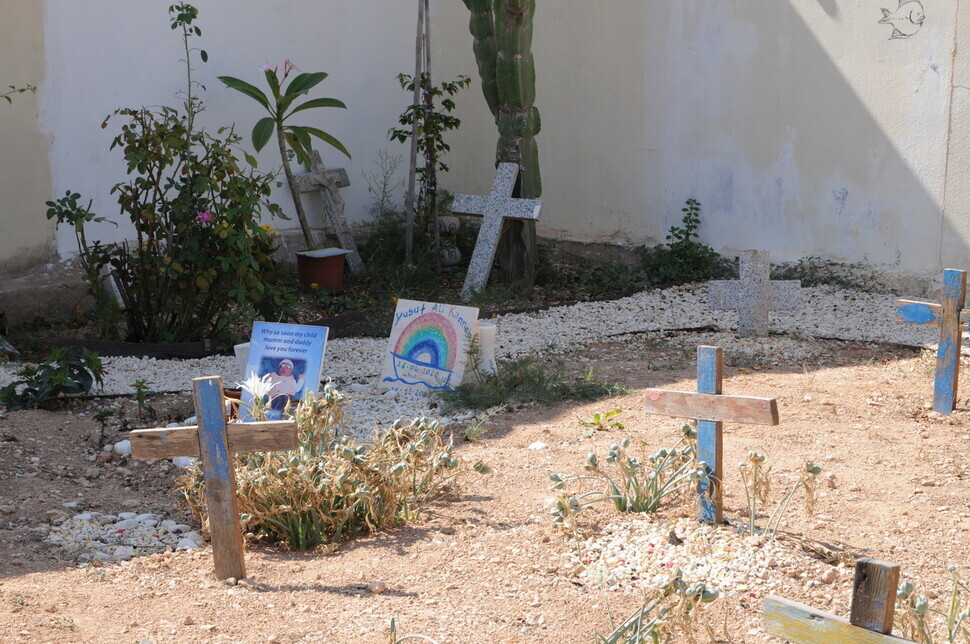
The first migrant crisis resulted from the protracted civil war in Syria, which first began in the spring of 2011. In the year 2015 alone, a million migrants streamed into Europe.
As a result, the far right enjoyed a resurgence in European politics.
In Italy, Giorgia Meloni became prime minister last year after running on a platform that pledged to block “illegal” migrants. In Germany, the far-right party Alternative for Germany (AfD), which runs on an anti-immigrant platform, is backed by 20% of voters.
Far-right parties have enjoyed major gains not only in Eastern Europe, where anti-immigrant sentiment was already strong, but also in Northern Europe, where the far right once had little foothold. Amid this year’s surge of African immigrants bound for Italy, there are growing concerns in Europe about a second migrant crisis.
When the Hankyoreh visited the island of Lampedusa on Oct. 3, a memorial service was being held to commemorate the 10th anniversary of the tragedy. But it was clear that many on the island were in no mood to commemorate the tragedy.
According to the UN International Organization for Migration (IOM), around 130,000 people came by sea to Italy between January and September. That’s twice the number who came in the same period last year. And about 70% of those migrants arrived via the small Mediterranean island of Lampedusa, which has a population of just over 6,000.
Over a three-day period from Sept. 11 to 13, around 8,500 immigrants arrived all at once. This left the island’s “hot spot” — the primary reception center — in a state of paralysis as it only has room for 400 people.
“More than 120 small boats arrived in Lampedusa in the span of roughly 24 hours, bringing the number of people at the local reception center to 7,000 people at one point,” the Associated Press reported on Sept. 15.
Reports around the world showed the sight of migrants being left to languish on the streets of a small island that depends on tourism.
For a decade, the tragedy has continued. According to the IOM, at least 28,000 migrants have lost their lives in the Mediterranean since 2013. The vast majority of those killed — over 22,300 — were traveling along the central Mediterranean route, which includes Lampedusa.
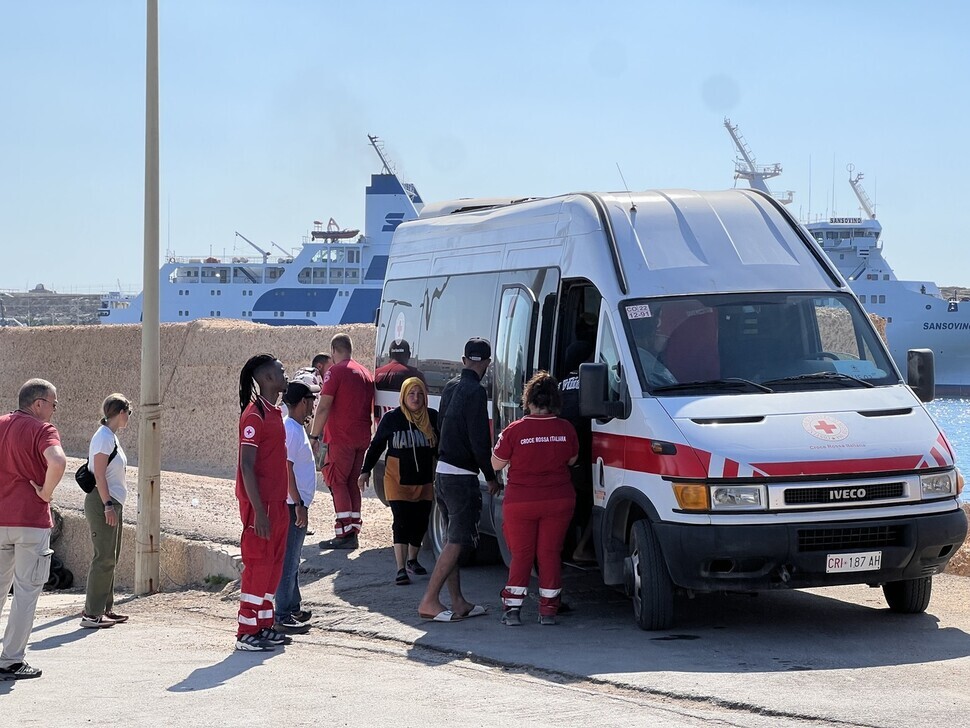
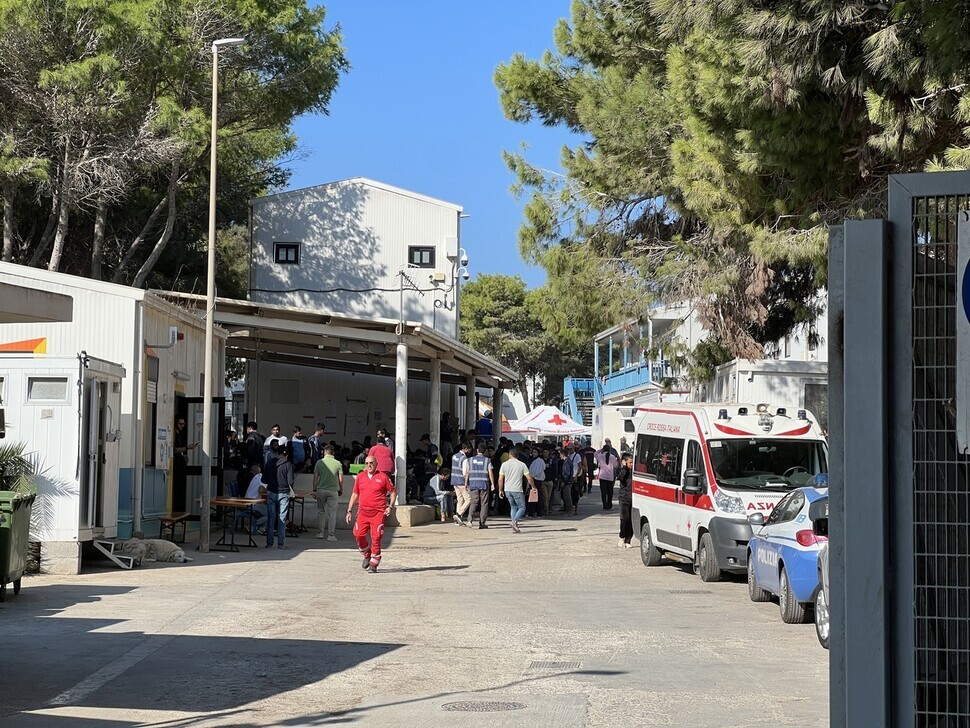
So far in 2023, around 2,300 people have died or gone missing in the Mediterranean. At least 289 of them were minors, according to UNICEF estimates.
On Sept. 13, a 5-month-old baby drowned when a boat carrying migrants capsized near Lampedusa. On Sept. 16, a newborn died on a boat with 40 passengers on board.
Caught off guard by the large numbers of immigrants arriving on the tiny island, Italian Prime Minister Giorgia Meloni invited European Commission President Ursula von der Leyen there on Sept. 17, explaining that Italy was facing “unsustainable pressure.”
With the island emerging as a symbol of the European migration crisis, those admitted there have been quickly sent to Sicily and other regions.
But the crisis is far from over.
When the Hankyoreh visited Lampedusa on Oct. 3 and 4, ramshackle boats filled with migrants continued arriving at its port one after the other. An IOM official sent to the scene explained that around 100 migrants from Libya had arrived on a wooden boat on the evening of Oct. 3, while another 18 had arrived on a small boat on the morning of Oct. 4.
Of the 18 migrants that the Hankyoreh witnessed arriving from Tunisia around 11 am on Oct. 4, three were children. They came to Favaloro Pier in a small inlet on the island’s southeast, where a mural bears the phrase “Proteggere le persone, non i confini" — meaning “protect people, not borders.”
Press controls are heavy, and while unable to approach, women and men with children on their backs could be seen boarding a vehicle from a distance. On the beach right next to the pier, tourists visiting from northern Italy had parasols out as they basked in the sun or dipped in the ocean.
Reaching the reception center requires traveling over a hill deeper into the island. Upon arrival there, crowds of people could be seen.
Beneath a bit of shade that protected against the scorching Mediterranean sun, people were packed so tightly they could barely move. Only the day before, there had been just 200 or so migrants at the center. A day later, the number had risen by some 500 — exceeding the center’s intake capacity.
There were so many people that they could barely be accommodated in the three to four structures set up in shipping containers. Dozens of police cars and vehicles belonging to the Red Cross and other relief agencies were lined up from hundreds of meters away from the entrance. Soldiers and police stood guard at the gate, preventing journalists and other outsiders from entering.
Inside the bars, migrants stood around the center in newly provided T-shirts and sweatsuits, carrying yellow packages with relief items inside. Most were young men — in strong enough condition to withstand the dangerous journey — but some children, women, and people in wheelchairs could also be seen.
When the migrants board their boats, they typically only take enough food and water for a journey that might last several days. Most have no other personal items.
Each day, they are sent off to different cities. Recently, aircraft have been used in addition to boats. On the day the Hankyoreh visited, the IOM sent off 180 of the more vulnerable migrants on a flight to Rome.
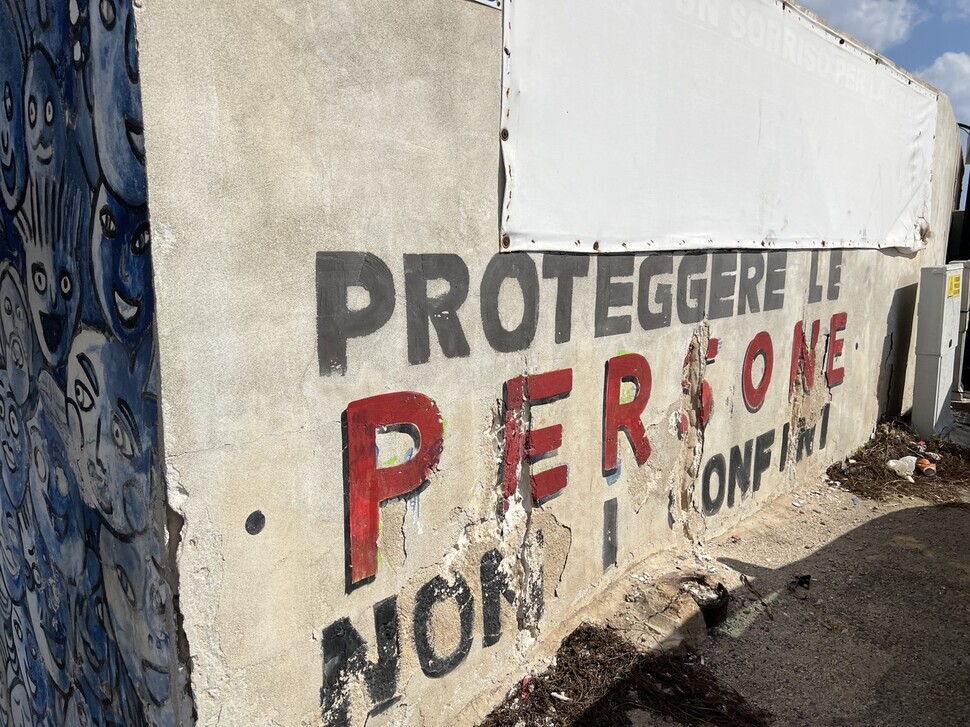
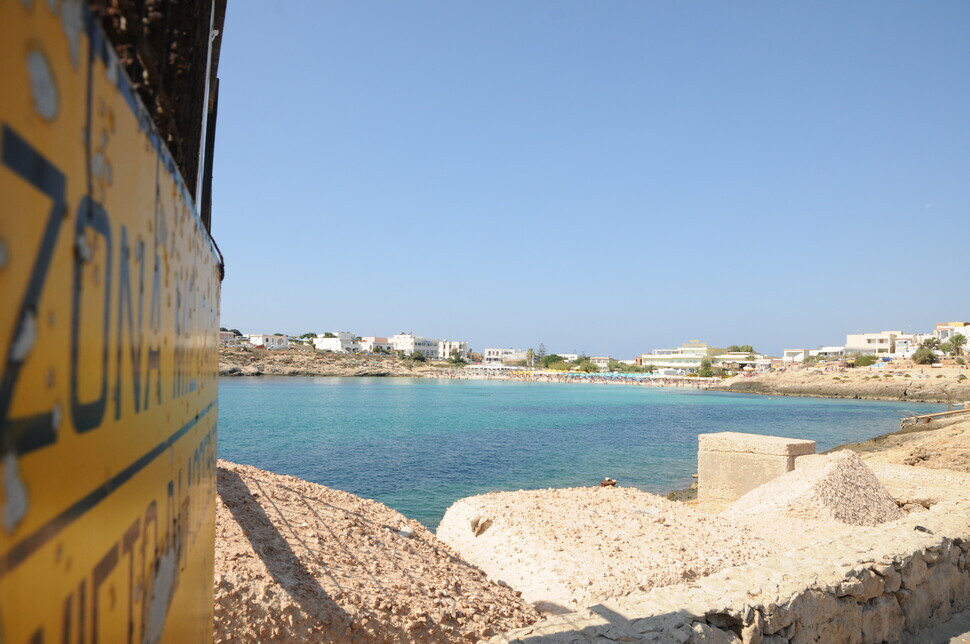
The island’s residents, most of whom work in tourism-related industries, appeared to have mixed emotions. Some islanders took part in demonstrations on Sept. 16 to protest the expansion of migrant facilities. But most of the residents that the Hankyoreh spoke to expressed compassion for the migrants.
A 38-year-old resident named Maria, who has operated a hospitality business for over eight years, said it was harder to watch people dying in the sea than to see migrants arriving in large numbers.
“African migrants should be able to arrive safely in Europe by airplane or boat like the refugees from Ukraine,” she said.
“The government needs to see to it that they can find jobs and work for a living. We can’t let this small island become a prison for migrants,” she insisted.
Maria is concerned about the situation potentially hurting business, but she stressed, “We can’t allow people to continue dying in the sea.”
“The government needs to open up a safe passage so they don’t have to risk their lives,” she urged.

Vito Fiorino, an older resident of the island, rescued 47 people after he saw the migrant boat that had suffered an accident a decade ago.
“Islanders have been welcoming migrants since 1994 or 1995, when there was no NGO support or government intervention,” he said.
“They provided them with food and clothes and allowed them to sleep at their homes. That relationship hasn’t really changed,” he added.
Experts said that while it is impossible to stop the influx of people braving the perilous sea journey in search of better opportunities in life, it is possible to prevent the tragic losses of lives to the sea.
But the solution put forward by the European Union last June was one aimed at reducing the number of migrants crossing the seas. That month, von der Leyen agreed to provide 1 billion euros toward both economic assistance to Tunisia on the other side of the Mediterranean — and toward stronger policing of migration activities.
It’s a solution that has already been attempted unsuccessfully in the past.
Von der Leyen shared a similar message in her visit to Lampedusa on Sept. 17, pledging to step up efforts to combat human smuggling and to ensure that people who do not meet the criteria for asylum cannot stay in Europe.
Flavio Di Giacomo, a spokesperson for the IOM’s Mediterranean office, told the Hankyoreh, “Europe has closed its borders. They say we have to defend borders. Yes. But I have to say that when we see people arriving here, they are young boys who are very tired. These people are not threats. These are people who actually need to be protected because they’re fleeing from dramatic contexts.”
“When you close migration pathways, different ones just open up that are longer and more dangerous,” he explained.
“The solution is to not close the door,” he stressed.
By Noh Ji-won, Berlin correspondent
Please direct questions or comments to [english@hani.co.kr]

Editorial・opinion
![[Editorial] Intensifying US-China rivalry means Seoul must address uncertainty with Beijing sooner than later [Editorial] Intensifying US-China rivalry means Seoul must address uncertainty with Beijing sooner than later](https://flexible.img.hani.co.kr/flexible/normal/500/300/imgdb/original/2024/0517/8117159322045222.jpg) [Editorial] Intensifying US-China rivalry means Seoul must address uncertainty with Beijing sooner than later
[Editorial] Intensifying US-China rivalry means Seoul must address uncertainty with Beijing sooner than later![[Column] When ‘fairness’ means hate and violence [Column] When ‘fairness’ means hate and violence](https://flexible.img.hani.co.kr/flexible/normal/500/300/imgdb/original/2024/0516/7417158465908824.jpg) [Column] When ‘fairness’ means hate and violence
[Column] When ‘fairness’ means hate and violence- [Editorial] Yoon must stop abusing authority to shield himself from investigation
- [Column] US troop withdrawal from Korea could be the Acheson Line all over
- [Column] How to win back readers who’ve turned to YouTube for news
- [Column] Welcome to the president’s pity party
- [Editorial] Korea must respond firmly to Japan’s attempt to usurp Line
- [Editorial] Transfers of prosecutors investigating Korea’s first lady send chilling message
- [Column] Will Seoul’s ties with Moscow really recover on their own?
- [Column] Samsung’s ‘lost decade’ and Lee Jae-yong’s mismatched chopsticks
Most viewed articles
- 1[Editorial] Transfers of prosecutors investigating Korea’s first lady send chilling message
- 2[Exclusive] Unearthed memo suggests Gwangju Uprising missing may have been cremated
- 3[Column] US troop withdrawal from Korea could be the Acheson Line all over
- 4S. Korea “monitoring developments” after report of secret Chinese police station in Seoul
- 5‘Shot, stabbed, piled on a truck’: Mystery of missing dead at Gwangju Prison
- 6US has always pulled troops from Korea unilaterally — is Yoon prepared for it to happen again?
- 7Could Korea’s Naver lose control of Line to Japan?
- 8[Editorial] Intensifying US-China rivalry means Seoul must address uncertainty with Beijing sooner t
- 9[Column] When ‘fairness’ means hate and violence
- 10Xi, Putin ‘oppose acts of military intimidation’ against N. Korea by US in joint statement